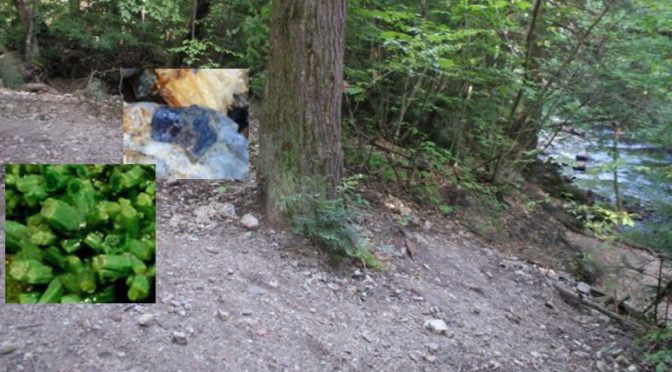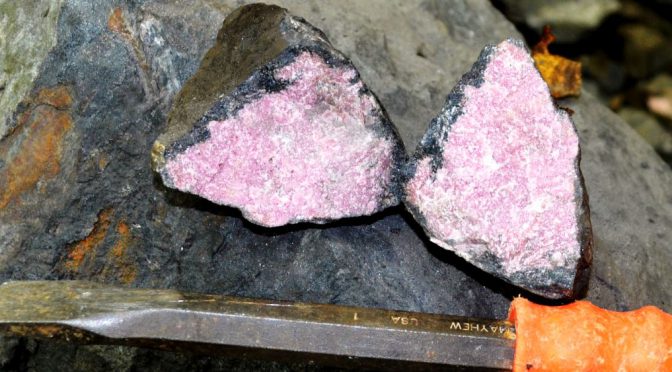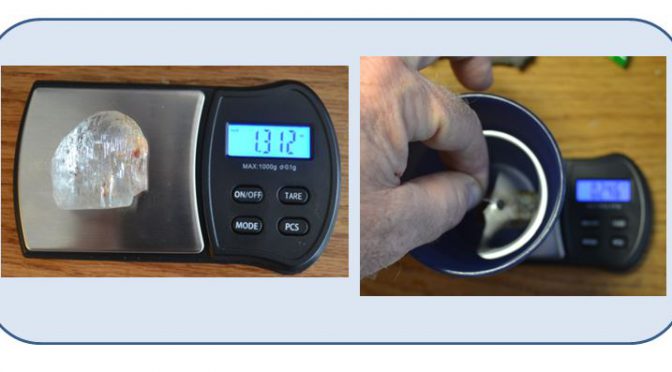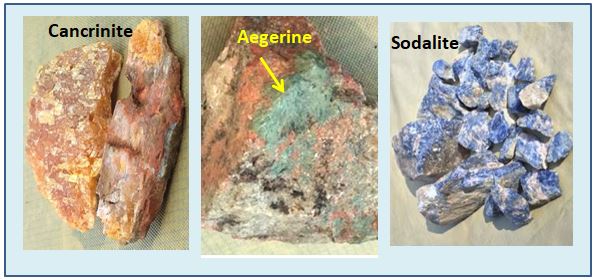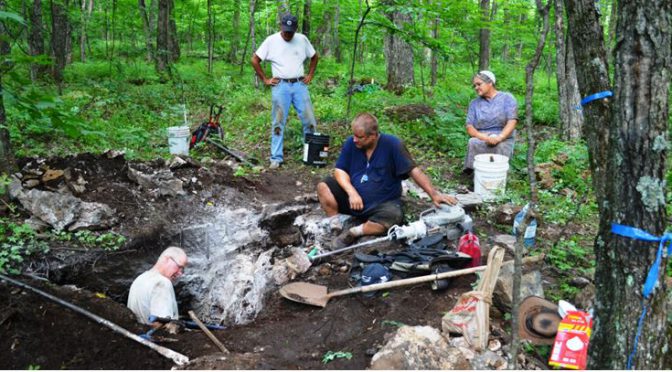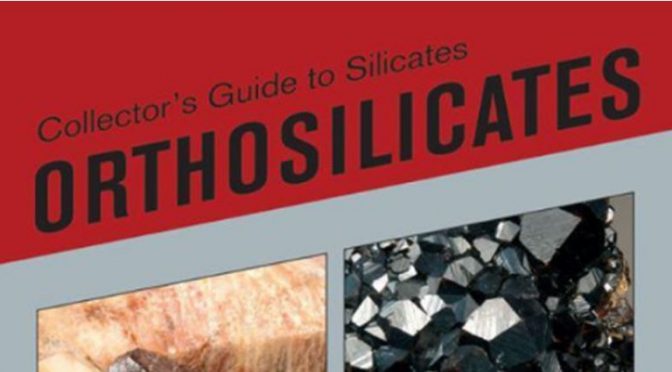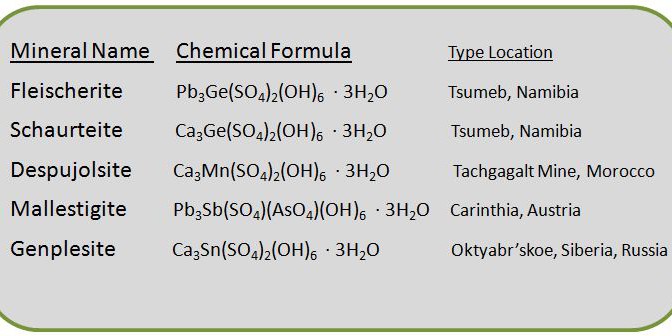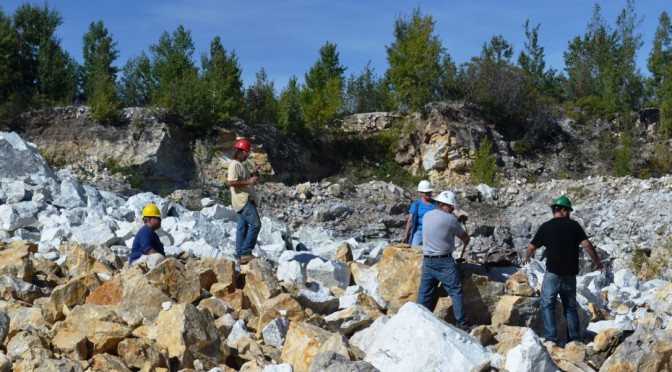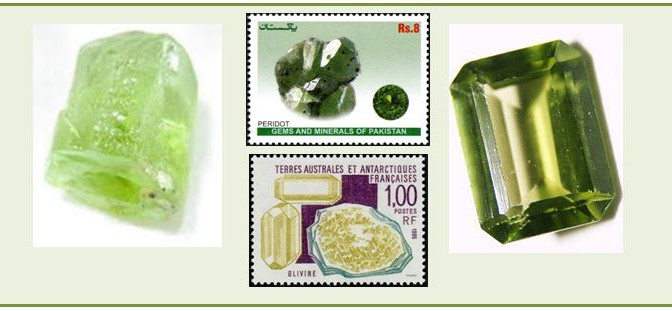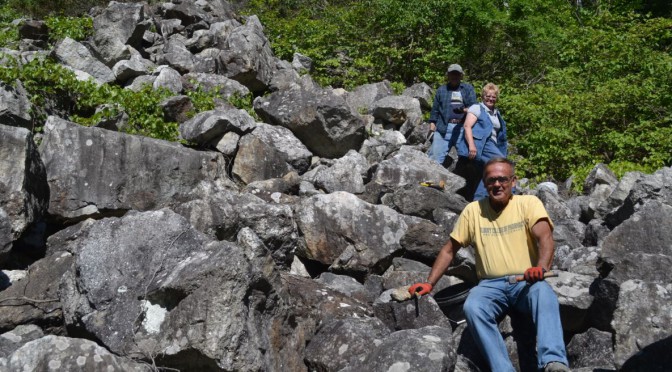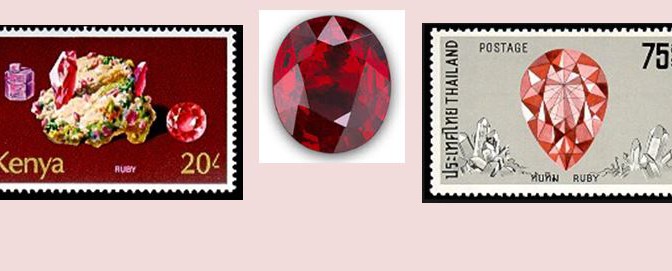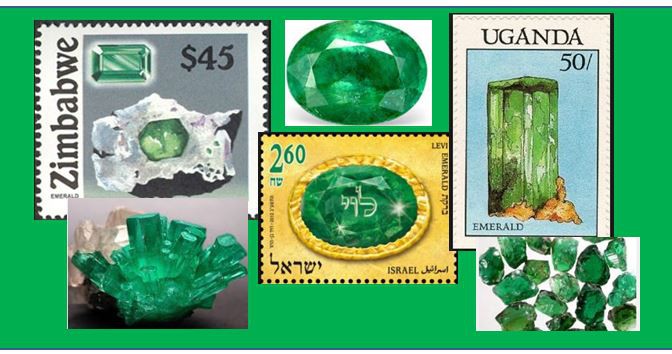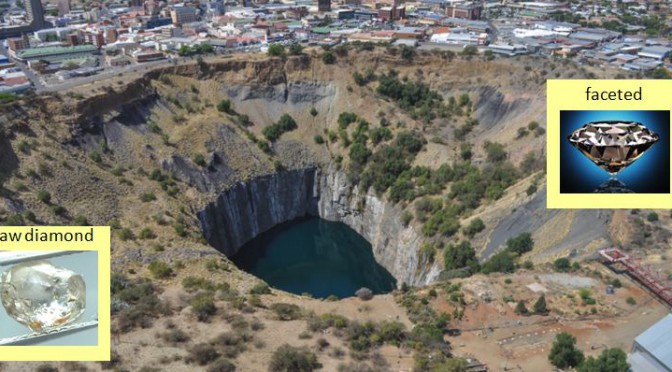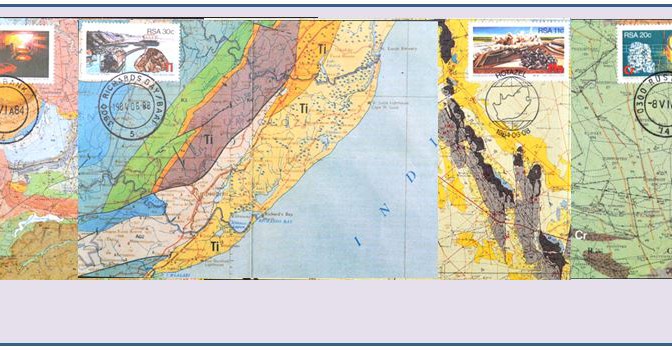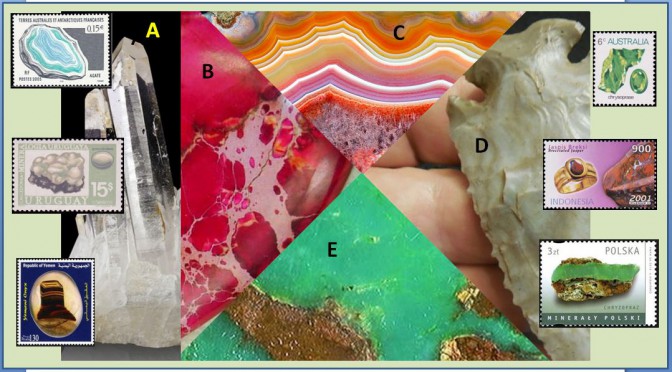Once in a while I like to combine my two primary hobbies, philately (stamp collecting) and mineral collecting. This is “once in a while” version 2017. This summer I participated in two separate week-long trips to Ontario to collect minerals: once with the Niagara Peninsular Geological Society of St. Catharine’s, Ontario and once on the annual Wayne County Gem and Mineral Club Canada trip. Now back home and with October baseball on TV, I decided to revisit my mineral finds and pictures from those trips and mix in a bit of philately. This first installment focuses on the historic mining district of Cobalt, Ontario, a site visited on both trips.
Category Archives: Minerals
Manhan Mine, Loudville, MA
Sometimes the history of a mining/mineral location can be as interesting as the mineral collecting itself. Loudville, and the Manhan Mine, is one such example. The mineralization at this historic location in western Massachusetts was discovered by Robert Lyman in 1678. When lead was first recovered two years later, the site became the first lead mine in North America. Lyman is said to have traded information on the location to Marshall Pynchon for one cow, and Pynchon worked the mine for about 20 years. It was during this time that the oxidized ore (with the prized pyromorphite and wulfenite) was thrown aside on the dumps. Only the primary sulfide ore, rich in galena, could be processed.
Scouting western Massachusetts for mineral sites
If you read my blog much, you know that I am an active member of the Wayne Country Gem and Mineral Club of western New York State and that I edit the club newsletter. You may even know the club motto: WCGMC is always looking for new places to dig. Well, this fall we ventured in New England on two occasions looking for new opportunities to include in our 2018 field trip season. In mid- September, two of us scouted out four sites in western Massachusetts and came back happy to report that several of them could form the basis of a trip to that region. In mid-October several of us plan a similar trip to visit several sites in western Connecticut. Later this fall or winter I’ll probably summarize that trip.
Without a doubt, the highlight of the Massachusetts trip was collecting rhodonite at the Betts Manganese Mine in Plainfield, MA. Rhodonite is the Official State Gemstone of Massachusetts and after a few hours hunting in the dumps it was easy to see why. After the location’s Minerals Coordinator, Rick Cernak, showed us the two quarries on the property and the location of the dumps, we set to work pounding and breaking rocks covered by dark black dirty manganese oxide.
Continue reading Scouting western Massachusetts for mineral sites
Measuring Specific Gravity
This note was published in the the Sept. 2017 WCGMC Newsletter
How do you try to identify an unknown mineral? If you are like most folks you start with color, which can help, but can also mislead. Trace elements and other types of inclusions can alter the color or many minerals. Does it have crystal faces? Maybe, but often not. Can you see a cleavage direction? Can you even distinguish crystal faces from cleavage? Calcite has rhombohedral cleavage, galena is cubic, but then fluorite is a cubic crystal with octahedral cleavage. That isn’t even fair. Luster helps with metallic minerals. Hardness can be helpful, but no one wants to scratch a prize find.
What about density, or more accurately specific gravity (sg). If it is magnetite or galena you can tell it is dense when you pick it up, but what about other minerals with specific gravity closer to the common minerals? Or heavy minerals that are not magnetic? Is there a method to easily measure specific gravity?
Rutter Pluton, French River, Ontario
For the second consecutive year, members of Wayne County Gem and Mineral Club joined with the Niagara Peninsula Geological Society for a several day trip to mineral sites in Ontario. We thank Ashley Pollock for organizing the trip and I thank Ashley for writing this short summary of one of the sites we visited and allowing me to publish it in the September, 2017 WCGMC newsletter and also this this blog.
It rained and then it stopped and then it rained again as we drove north to start our week long summer collecting trip. But when we met our Wayne County Club friends at our first collecting stop along the French River south of Sudbury, the clouds had parted and the week of fun began.
The Rutter Pluton is a nepheline-syenite intrusion within/ straddling the border of the Grenville Front Tectonic Zone (GFTZ) of the Grenville Province. The 10 km long, 2 km wide igneous body is dated at 975 million years. Like much of the Precambrian terrain in Ontario, the igneous rocks have been metamorphosed to a gneissic texture. Mineralogically, the pluton consists of nepheline, albite (plagioclase feldspar), potassium-feldspar, and biotite mica. Quartz is absent.
Calcite-Vein Dikes in Tory Hill, Ontario
The annual test of aging bones and muscles that we call the Wayne County Gem and Mineral Club quest for really old Ontario rocks was in July this year. The event lasted five days for several and eight days for four of us who continued on to Cobalt, Ontario. I am happy to report that all of us survived, and we have the pictures, stones, bruises, and mosquito bites to prove we were there. The whirlwind trip included collecting beryl and rose quartz in two pegmatites, a day in Eganville for apatite and biotite, a quarry stop for fossils, Princess Mine for sodalite, Schickler Mine for fluorite, Desmont Mine for mosquitoes, and Essonville Line roadcut for fluoro-richterite. Four of us carried on to Cobalt, grabbing some garnets along the way and finding one very nice silver-laced boulder at a mine dump in Cobalt.
The highlight of the trip had to be the day we spent with Canadian collector George Thompson on his mineral claims off Gibson Road in Tory Hill. We all thank him for sharing his calcite vein-dikes with us and allowing us to carry home memories of a fine day in the field. Oh, we took home some minerals also. And thus this note focuses on George’s property and the fifth day of our adventure. Continue reading Calcite-Vein Dikes in Tory Hill, Ontario
BOOK REVIEW: Orthosilicates
What do you call chemical compounds that are comprised of isolated silica tetrahedron: that is, where the tetrahedrons do not share any corner oxygens with other tetrahedron, but rather are connected by cations in various configurations? Why, orthosilicates, of course. Olivine, garnets, zircon, staurolite, and topaz are orthosilicates, to name a few. So is titanite, one of our favorite Bancroft, Ontario minerals.
When Dr. Robert Lauf arrived at the Rochester Mineralogy Symposium in April he was carting several boxes of his newly minted book entitled “Collector’s Guide to the Silicates: Orthosilicates”. After his Friday morning talk on the topic, the line to obtain signed copies was predictably long. I got there early to secure mine, but I do believe Robert was prepared and everyone who desired a signed copy at the symposium was rewarded. Continue reading BOOK REVIEW: Orthosilicates
The Wollastonite Group of Minerals
Published in the February 2017 WCGMC Newsletter
OK, I know, most of us have heard of the mineral wollastonite and many of us have collected it at the Valentine Mine in Harrisville, or at Rose Road in Pitcairn or Cascade Slide in the Adirondacks. You may even know that 100% of North America’s mined wollastonite comes from two quarries in New York, the aforementioned Valentine Mine and the Lewis Mine near Willsboro. If you voted in the election of 2013, you may remember Proposition #5 in which the operators of the Lewis Mine sought to trade 1500 acres of their property for 200 acres in Adirondack Park immediately adjacent to the quarries west wall.
But did you know that wollastonite is just one triclinic silicate mineral within what is known as the Wollastonite Group? These minerals are all single chain silicate minerals in which every third silicate tetrahedral is “twisted”. Calcium cations connect parallel chains in wollastonite leading the chemical formula CaSiO3. The lesser known members of this mineral group employ different elements as noted in the accompanying table.
Larimar
At one of Wayne County Gem and Mineral Club’s December workshops (and we had two!), Robert Webster arrived with some beautiful larimar to cut, grind and polish. After his successful work he posted pictures of several of his creations to our club’s Facebook Group page.
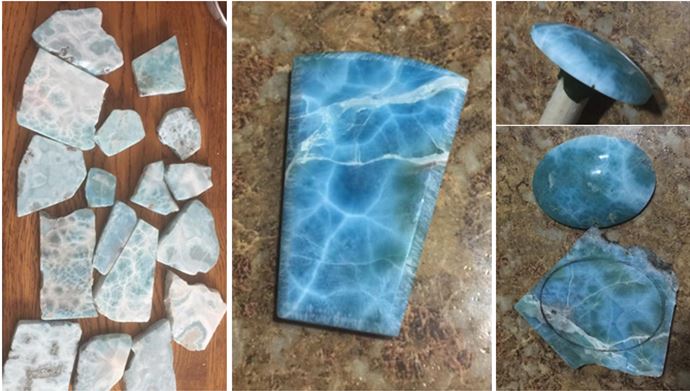
The Fleischerite Group of Minerals
Despujolsite, Mallestigite, Schaurteite, Genplesite: OK, if you are honest with yourself you will admit you have never heard of these minerals. I hadn’t. And therefore you would not know that they are all hexagonal sulfates within the Fleischerite Group of minerals. But naturally there is even more about them you do not yet know but should!
Seavey Road Quarry
Wayne County Gem and Mineral Club’s September Adirondack field trip was another great success. Seven spots in 4 days with the Saturday AM visit to Benson Mines in Star Lake attracting the most collectors. 33 folks convened and enjoyed a morning collecting in the dumps of the open-pit iron mine just outside town. Five of the other sites visited were repeats for the club (Rose Road, Benson Mines, Talcville, Valentine Mine, Fine roadcut, and Moose River). However, we had never been to the Seavey Road marble quarry north of Gouverneur. Thanks to Ken St. John, who had visited earlier with a small group of fluorescent mineral collectors, and to quarry owner Kevin Dibble, we were able to spend three hours in the large, and very white, quarry. As a new site for us, the Seavey Road location deserves a review.
August Birthstone – Peridot
Published in the August WCGMC newsletter
Olivine is one the most common rock-forming silicate minerals on our glorious planet. It is found in iron and magnesium rich igneous rocks, both extrusive rocks like basalt (think Hawaii) and intrusive equivalents like gabbro and deep mantle rocks called peridotite.. When it is found transparent and unfractured, olivine can be faceted into a brilliant green gemstone. We call that gemstone peridot and it is the August birthstone.
Olivine Group minerals are nesosilicates, meaning that their mineral lattice consists of isolated silica tetrahedral that are connected by interstitial cations (most commonly iron and magnesium). This leads to the formula (Mg, Fe)2SiO4. End member Mg-bearing olivine is the mineral forsterite, while Fe-dominated olivine is the mineral fayalite. The term chrysolite is sometimes used to label intermediate composition olivine. Most olivine contains both magnesium and iron, but Mg-rich forsterite is more common than fayalite.
Trilobites to Tertiary Topaz
Many thanks to Stephen Mayer for writing this collecting trip note for the August WCGMC newsletter and also for allowing me to post it my blog.
By Stephen Mayer
Tammy and I are back from a vacation in the desert southwest. Naturally, we took some time between visits to National Parks to do a little fossil and mineral collecting in Utah. The setting and geology are quite different than in western New York.
Very thick shale and calcareous mudstones are widespread in Millard County, west-central Utah and contain some of the best Cambrian biotas in the world. Not only are there 505-520 million year old fossils abundant, but also recent volcanism in the same region has left its mark with abundant rocks and minerals. Specifically, well preserved trilobites and beautiful topaz crystals can be collected.
Pulpit Road Graphite
When I ventured to New Hampshire and Maine with three other intrepid collectors in search of aquamarine, topaz, smoky quartz, and other pegmatite riches, we did not pass by the planet Mercury (see posting of June 30, 2016). However, we did find an interesting spot to collect a little graphite. The site is in extreme eastern New York between the northern end of Lake George and the southern end of Lake Champlain. Along Pulpit Road, one half mile east of Route 22 in Putnam, NY, a large pile of boulders lay just 50 feet off the roadside. Bob, Linda, and Gary provide scale to the boulders in the cover photo.
July Birthstone – Ruby
Published in the July WCGMC newsletter
Rubies are red, very red. Rubies are hard, very hard. In fact with a hardness of 9 on the Moh’s scale, they fall just below diamonds as the hardest natural mineral on earth. Ruby is also the birthstone for July, the seventh month in the Gregorian calendar.
EMERALD – MAY BIRTHSTONE
It seems we have been here before! The May gemstone is a repeat of the mineral beryl. Yes, emeralds are a different color than the March gemstone aquamarine, but mineralogically a beryl is a beryl is a beryl.
The striking green color of an emerald is caused by the introduction of just 0.1-0-5 percent chromium substituting into the aluminum spot of the beryllium silicate mineral. A small amount of vanadium is also present. It is truly amazing that just a fraction of a percentage of an element can impart such a striking difference in color. While the richness and intensity in color is paramount in valuing an emerald, the presence of visible inclusions is also important. Emeralds lacking inclusions to the eye are considered flawless and carry more value than those with visible inclusions.
Diamond – April Birthstone
Published in the April WCGMC Newsletter
Diamonds are found in very unusual magmatic intrusive bodies called kimberlites or in alluvial deposits resulting from the weathering and erosion of kimberlites and the concentration of the hard and resistant gems in placer deposits. Kimberlites are pipe-shaped igneous intrusions that erupted from great depth. With high gaseous and volatile content, they were able to fracture and penetrate the very thick continental crust, often encapsulating blocks of the fractured host rock as they ascended. (Kirkley et. al.,1991). Their pipe-like morphology is evident in the picture of the kimberlite pipe quarry from Kimberly, South Africa pictured in the header of this article.
South African Mineral Maxicards
A Maximum Card (often referred to as a maxicard) is a philatelic postcard with a postage stamp placed on the picture side of the card. The stamp and card match or in some way relate to each other. Maxicards are officially released by many of the world’s postal services, but they are also generated personally by individuals combining a stamp issue with a simple souvenir postcard. In most cases, the cancellation is also related to the image on the front of the card and the stamp.
As a collector of minerals, mining and geology on stamps South Africa’s 1984 four-stamp set commemorating some of the country’s strategic resources was a fine add to my collection. It was not until a couple of years ago, however, that I learned that the officially released Maximum Cards S10-S13 for these stamps featured geologic maps. Not only would this satisfy another of my topical interests (maps on stamps), but as a retired geologist I found the inclusion of geologic maps on the “Maxicards” most interesting. Thanks to a tip provided by a fellow member of The CartoPhilatelic Society on the club’s shared discussion site, I was able to purchase a complete set via an online source.
Now it seemed only fitting that I research the stamps and maps a bit. This note will be constructed to accommodate both Philagems and The New CartoPhilatelist, newsletter of the Maps on Stamps Study Units, as the cards are equally collectible for members of both ATA study units.
Aquamarine – March birthstone
Written for the March 2016 Wayne County Gem and Mineral Club newsletter
The mineral beryl is hard and can sparkle with exceptional clarity and wondrous color when free of inclusions and defects, clearly justifying its lofty gemstone status. In fact, not just one gemstone, but several depending on the color imparted by trace amounts of iron, chromium, manganese and other transition elements substituting into the crystal lattice. Aquamarine, emerald, morganite, and heliodor are all gemstones of the mineral beryl. But it is sky blue variety that has our special attention this month as aquamarine is the March birthstone.
The Many Names of Quartz
Published in the February issue of WCGMC News
Quartz is simple. Right? Just a silicon (Si) atom nestled in the center of a tetrahedral form surrounded by four oxygen atoms. Build them together, let the silica-centered tetrahedral motifs share oxygen atoms and bingo we have SiO2. Quartz crystals grow from this. They grow into beautiful clear, milky or smoky trigonal crystals with six-sided prisms terminating in six-sided pyramids, simple as a childhood erector set or a Lincoln Log cabin (with that distinctive green roof). Herkimer diamonds are our favorites, but amethyst and citrine colors are nice too.
OK, but now we are told that quartz which grows rapidly or under “special” conditions can be cryptocrystalline, a condition that exists when the individual quartz crystals are too small to see even with an optical microscope. And this apparently changes everything. No longer are we collectors satisfied to apply the common mineral name, albeit with a few modifiers for color (amethyst, citrine, rose quartz).

